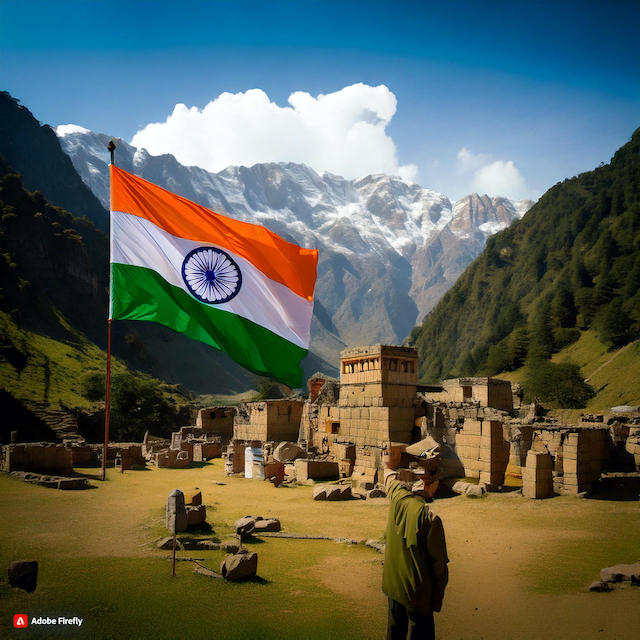The recent resolution by the Jammu and Kashmir Legislative Assembly, calling for the reinstatement of the region’s “special status,” represents not just a political shift but a strategic reimagining of the future. Introduced by the newly elected National Conference (NC) government, this resolution conspicuously avoids any mention of Articles 370 or 35A—the pillars that once defined Jammu and Kashmir’s unique status within India. This silence is deliberate, revealing a nuanced, forward-thinking approach. Under Omar Abdullah’s leadership, the NC government appears determined to pursue autonomy without clinging to the legally complicated and politically charged Articles 370 and 35A.
A Calculated Departure from Tradition
This strategic omission is telling. For decades, Articles 370 and 35A were the bedrock of Jammu and Kashmir’s autonomy, granting the region its own constitution, flag, and a degree of self-rule. Their abrogation in August 2019 was a landmark moment, forever altering the political landscape and intensifying tensions between regional leaders and the central government. Today, any invocation of these articles risks reigniting the fierce ideological divide, particularly with the Bharatiya Janata Party (BJP), for whom the repeal of Article 370 has been a defining political achievement.
By avoiding references to these provisions, Abdullah’s administration signals a readiness to seek alternative paths to autonomy—paths that might be less contentious and more conducive to dialogue with the central government. The focus is no longer on the past, but on building a framework for the future that preserves regional identity while navigating political realities with greater finesse.

The Constitutional Path Less Taken: Article 371
If not through Articles 370 or 35A, how can Jammu and Kashmir regain its autonomy? Article 371 of the Indian Constitution provides a compelling alternative. Designed to address the unique cultural, economic, and administrative needs of specific regions, Article 371 contains provisions that grant varying degrees of autonomy to states such as Nagaland, Mizoram, and Maharashtra. These clauses respect the local context while remaining firmly within the Indian constitutional framework.
For instance, Article 371A grants Nagaland autonomy over its customary laws and practices, while Article 371G provides similar protections to Mizoram. By drawing from these models, a tailored provision for Jammu and Kashmir could grant autonomy over key local issues—land rights, employment preferences, and cultural preservation—without encroaching on matters of defense, communication, and foreign affairs, which remain firmly under central control. This approach could offer a balanced, legally sound framework for autonomy that avoids the polarizing baggage of Article 370, while still allowing the region to preserve its distinct identity and values.
A Strategy of Constructive Diplomacy
In avoiding direct reference to Article 370, Abdullah’s government demonstrates not only political astuteness but also a commitment to diplomatic engagement with the central government. This approach sidesteps a head-on confrontation with New Delhi, opening the door for more constructive dialogue. Rather than insisting on a return to the pre-2019 status quo, the NC government seeks to build a new framework—one that aligns the aspirations of Kashmiris with the current political landscape.
This measured approach is not merely a tactical maneuver; it is a recognition that meaningful progress often requires moving beyond the rigidities of the past. Restoring self-governance in cultural, linguistic, and economic matters could provide the region with a sense of control and dignity, without escalating tensions. It is a delicate balance—one that aims to foster trust and stability through a more pragmatic and less confrontational path.
Responding Pragmatically to a Changing Landscape
The political context in Jammu and Kashmir has undergone a seismic shift since 2019. For many in the region, the issue of special status transcends mere constitutional argument; it speaks to the preservation of cultural heritage, political agency, and economic opportunity. Abdullah’s administration is responding to these realities with a refreshing pragmatism—recognizing the aspirations of the people while adjusting to the new political realities of the Indian Union.
Utilizing Article 371 or similar constitutional provisions could be the key to achieving this balance. It offers a flexible, constitutionally sound solution that respects the region’s unique identity while remaining firmly within the framework of national unity. Such a strategy could pave the way for other culturally distinct or conflict-prone regions in India to assert their autonomy without undermining the integrity of the Union.
A Vision for a Complex State
In a country as diverse as India, policies must evolve to meet the unique needs of different regions without compromising national cohesion. The recent resolution by the Jammu and Kashmir Legislative Assembly may very well represent the beginning of such an evolution. By opting for a framework that respects regional distinctiveness while ensuring political stability, this approach could bring Jammu and Kashmir closer to a future marked by peace, autonomy, and prosperity.
Omar Abdullah’s administration has made a conscious choice to embrace a forward-looking vision—one that acknowledges historical grievances but seeks solutions aligned with the present. If successful, this approach could become a model for India’s diverse regions, reaffirming the nation’s commitment to unity in diversity. In the end, autonomy without the past may prove to be the wisest course, ensuring a future where Jammu and Kashmir’s distinct identity flourishes within the broader framework of the Indian Union.

Saurabh Chauhan, an independent journalist, has over 15 years of experience in Print and Digital Media. He has extensively written on a variety of issues including women’s rights, environment, crime, governance, finance and politics at Shimla, Chandigarh and Lucknow. Saurabh currently divides his time between Shimla and his native place in Kotgarh (Shimla Hills).


